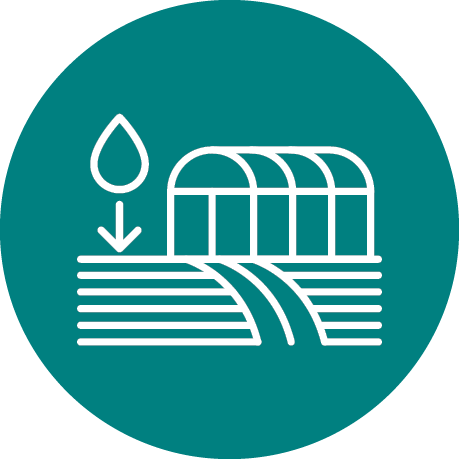Regional Conjunctive Use Project

The Regional Conjunctive Use Project is intended to increase surface water use and precision irrigation strategies within the Wyandotte Creek Subbasin. Essentially, the GSA is working with water agencies and water rights holders to identify available surface water, and with growers to identify more efficient ways to water crops and reduce water use. To do this, growers need to be identified and engaged to participate in an irrigation pilot program that uses precision irrigation to water crops more efficiently, reducing how much groundwater is used while watering. The project comprises three phases:
- Intra-Basin Water Exchange Feasibility Study: This phase will collaborate with water purveyors within the subbasin to expand their ability to deliver water supplies to agricultural users in the subbasin.
- Agricultural Surface Water Supplies Feasibility Study: This phase aims to assess and utilize existing surface water resources in the region to provide water to agricultural users in the Wyandotte Creek subbasin.
- Agricultural Irrigation Efficiency: The final phase focuses on enhancing subbasin sustainability by reducing consumptive water use. This program will utilize a mobile irrigation lab to assess landowners’ current irrigation methods, provide recommendations for improvements, assist in implementing any changes, and monitor and evaluate the effectiveness of those improvements.
Key Project Tasks:
- Conduct planning and design activities for diverting water from intra-basin sources, such as the South Feather Water and Power Agency.
- Plan and design efforts to increase the use of surface water for agricultural irrigation to reduce groundwater dependence.
- Develop and implement a pilot project to improve flood control and enhance groundwater recharge by clearing vegetation, trash, and sediment from drainage ditches.
- Conduct a feasibility study to identify potential agricultural users who could replace groundwater supply with surface water. Investigate the viability of dual-source irrigation systems and determine the necessary environmental documents and permits for the project.
Consultant: Larry Walker Associates
Total Project Budget: $753,000
WyC Surface Water Supplies Public Meeting Presentation 11.07.2024.pdfRegional Conjunctive Use Presentation to Board_04.24.2025.pdfKey Accomplishments
Intra-Basin Water Exchange Feasibility:
- Held meetings with the Thermalito Water and Sewer District (TWSD) and South Feather Water and Power Agency (SFWPA) to explore feasibility.
Surface Water in Lieu of Groundwater
- Met with Butte County Public Works to discuss surface water supply and recharge opportunities.
- Toured SFWPA facilities and service area to gather information and summarize diversions from the SFWPA water delivery system.
- Met with West Yost, the County’s consultant for the Palermo Master Drainage Plan, to explore water supply and recharge opportunities.
- Identified a promising collaboration opportunity: LWA will build on and advance the conceptual designs developed by West Yost in the Palermo Master Drainage Plan.
- On November 7, 2024, the Surface Water Supplies Public Engagement Meeting was held.
- Spring 2025: Engaged with landowners to assess interest in participating in surface water supply and recharge pilot programs.
- April 2025: Provided project updates and requested input on which of the three surface water supply concepts to advance to 60% design. Presentations were made at the April 3 Wyandotte Creek Advisory Committee meeting and the April 24 Wyandotte Creek GSA Board meeting. The Board approved moving forward with the Palermo multi-benefit concept to the 60% design phase.
Agricultural Irrigation Efficiency Program
- Formed an ad hoc committee to advise on the planning and implementation of the Precision Irrigation Pilot Program.
- The pilot project is taking shape: we will collaborate with Kevin from the Resource Conservation District (RCD) and utilize their mobile irrigation lab.
- The lab will assess current irrigation methods, suggest improvements, and monitor the effectiveness of those changes.
- Began identifying landowners and farmers to participate in the Agricultural Irrigation Efficiency Program.
Schedule

